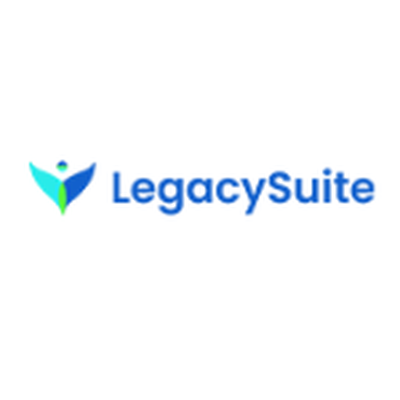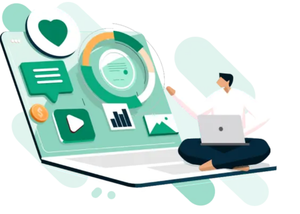Why Is It Necessary To Know Digital Assets Security
Body
Visual content like video and images accounts for the majority of online content nowadays. The need for visual content is increasing, prompting marketers worldwide to look for strategies to manage their growing digital asset load and provide content swiftly.
We are witnessing a continuous increase in infrastructure being developed around digital assets- the technology is budding, regulatory tailwinds are rising, and institutional customer need is increasing. The current transition will have a significant impact, particularly on financial institutions.
Marketers spend the most time searching for the proper digital asset to improve their content, whether it is an image, a video, or a graphic. A digital asset management system is an excellent option for keeping digital materials structured, easily shareable, and searchable.
With an aim to maximize scalability and accessibility, several businesses are implementing digital asset management in addition to cloud storage.
All About Digital Asset Management
Digital asset management software organizes, recovers, and manages the rights of an organization's digital assets or rich media. These solutions add metadata to assets like tags, which include information like the filename, content, format, and usage. Furthermore, it centralizes and distributes assets across companies.
The following aspects are common in most digital asset management solutions:
Central repository: A digital asset management functions as a centralized library and offers a single and secure search system.
This enables them to find the most recent approved versions of their projects. Moreover, you can configure the workflows to automate when to attach and tag metadata to digital assets before uploading.
Restructuring workflows: Having all of your materials up to date and readily available assists your marketing team in managing their ongoing projects. They can quickly assign, assess, and approve tasks; therefore, digital asset management also serves as a project management tool.
Easy sharing as well as distributing: The marketing team can allocate and deliver digital assets to teams and individuals. Additionally, the system supports direct streaming to YouTube, Twitter, and Facebook.
Digital Assets Security Risks
Sharing and keeping sensitive digital assets in the cloud raises several issues and risks that must be addressed. Following are some key risks that a digital asset management system depicts.
Central information hub
While a central hub improves content management by exploring and viewing everything through the dashboard, it also introduces significant risks. When an account is hacked, such as by a malevolent insider or an attacker taking control of an account, the threat actor may obtain access to all the digital assets of an organization.
Universal sharing
What is one of the most desired attributes is also a source of danger. Users transfer files directly from the platform, eliminating the need for tedious email attachments or FTPs. Nevertheless, this means that malevolent insiders can gain access to protected assets and distribute them to attackers.
Collaboration tools
This enables team members to collaborate on a project by sharing versions, commenting, and editing. However, if one of their accounts is hacked, it might constitute a security issue because malevolent individuals can readily exchange data with them.
Automated tasks
The majority of digital asset management platform procedures are automated to maintain a smooth workflow. Activities such as sharing information with team members, sending assets to clients, and transcoding files are handled automatically. The problem is that automated procedures can be abused, exposing the entire workflow channel and resulting in data loss or leakage of critical assets to attackers.
Digital Asset Security Best Practices
Aside from the threats listed above, it is critical to assess your entire security posture with reference to your digital assets. You can begin by evaluating the factors listed below:
Control over digital assets
You should have a unified view of the data across the database setting, users, and network. This is also applicable when digital assets are transferred via mobile devices.
A security approach that is proactive
Most businesses take a reactive approach to digital security, responding only when they are attacked. In an environment which is interconnected such as digital asset management, it is crucial to continually monitor the network for risks, whether internal or external.
Implementing compliance protocols
Baseline security protocols should be configurable across data environments. Compliance with laws such as GDPR and PCI-DSS is essential for businesses operating in geographically dispersed locations. Both PCI compliance and GDPR (General Data Protection Regulation) are intended to improve end-user safety and personal data security. However, there are some critical differences to be aware of. Because PCI DSS addresses the processing of credit cards as well as personal data, and GDPR addresses the usage and storage of personal details, there is some overlap, which can lead to confusion in some circumstances.
Wrapping Up
In the twenty-first century, digital assets are predicted to be the primary driver of long-term economic growth. For example, Bitcoin is a digital currency that has the potential to become a universal store of ‘digital gold’ or value.
Through this blog, we are presenting one such platform which can help you securely transfer all your digital assets, thereby maintaining your digital life. Legacy Suite’s patent-pending technology strives to revolutionize the Estate planning process by allowing you to retain your crucial ledger of NFTs, crypto, and all digital assets in one safe personal ‘centralized’ location. Moreover, you can share these vital facts with whomever and whenever you wish.
Digital assets have evolved into crucial elements for brand loyalty, with all the digital interaction revolving around copy and graphics. However, your digital assets are only valued if they are located and utilized effectively.
For more information, please visit https://www.legacysuite.com/.















Comments